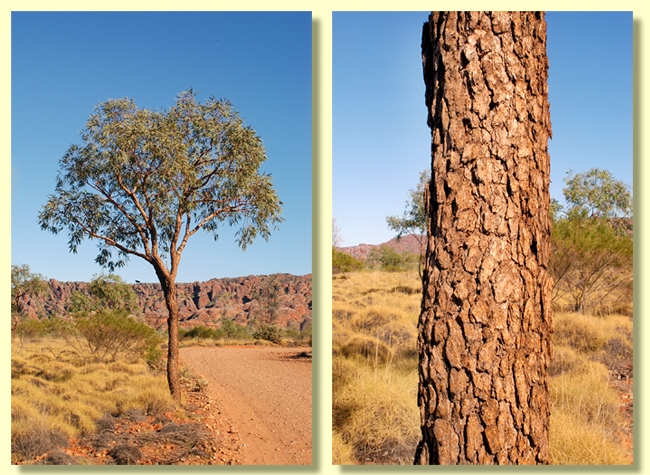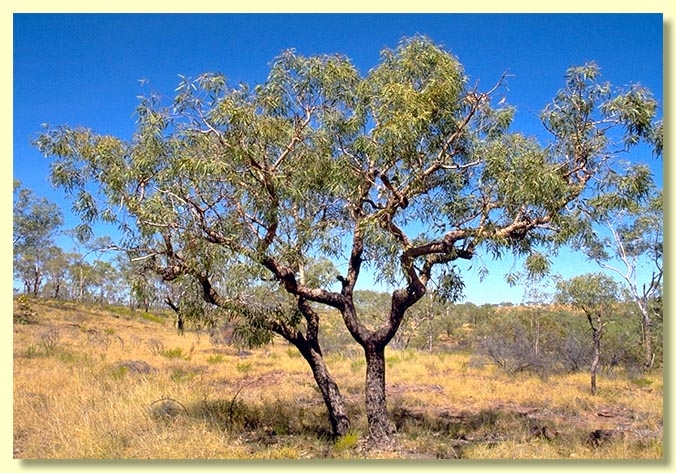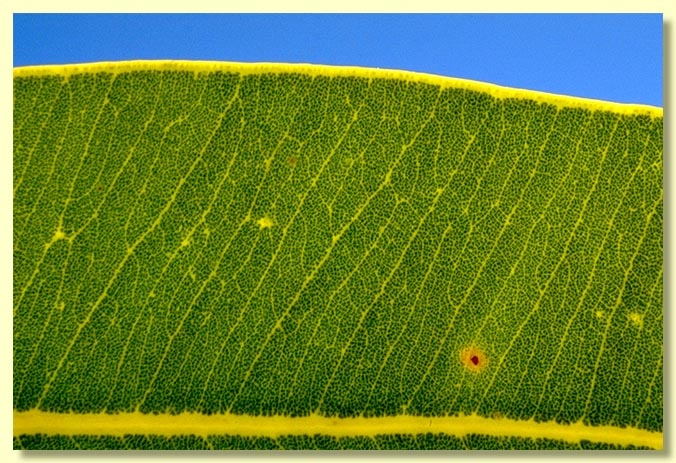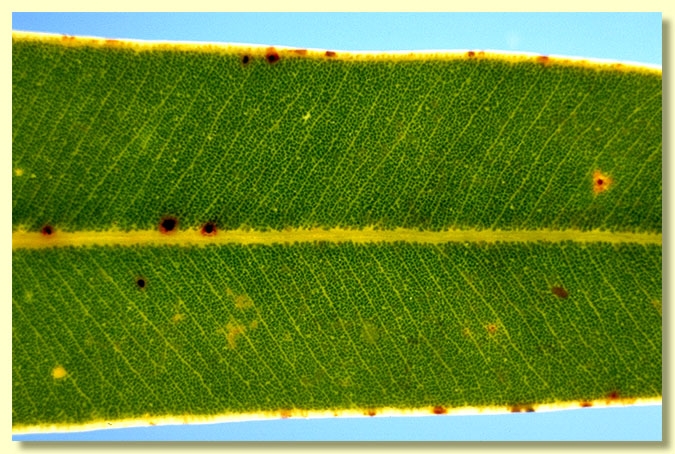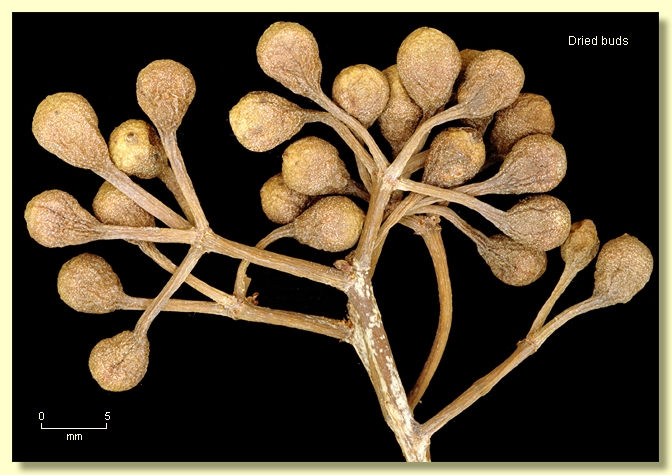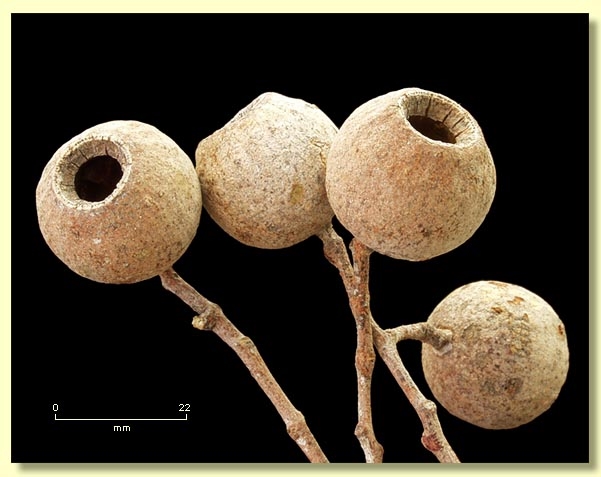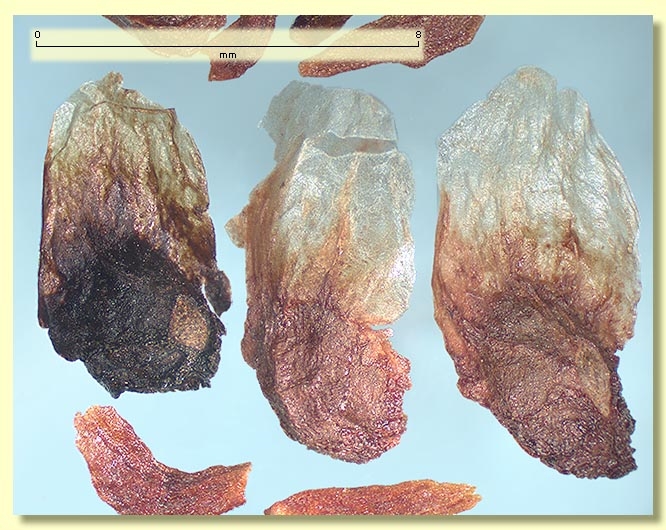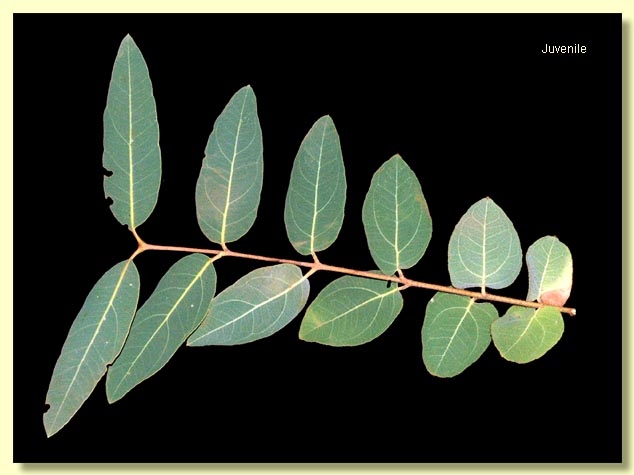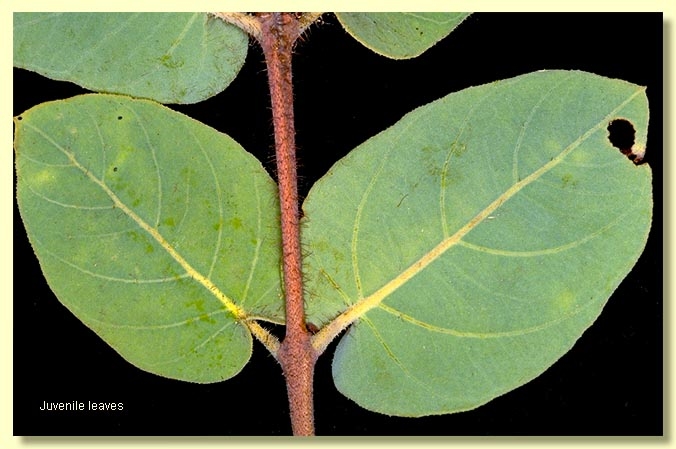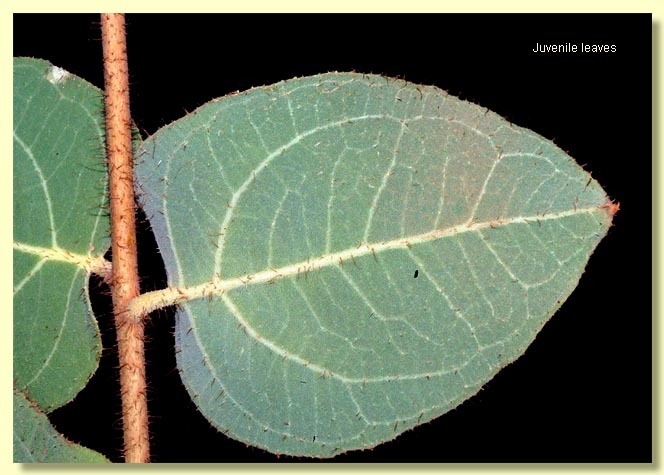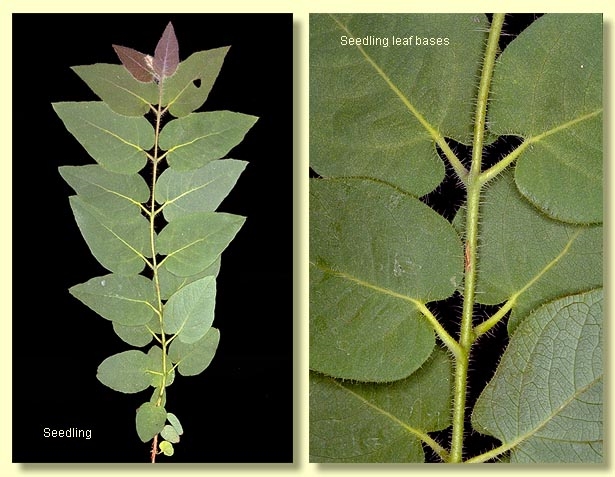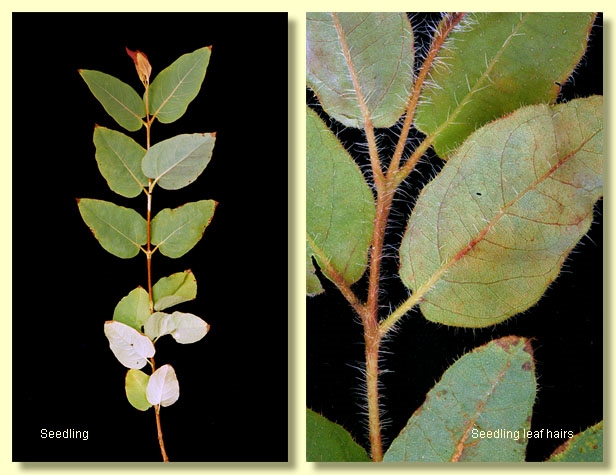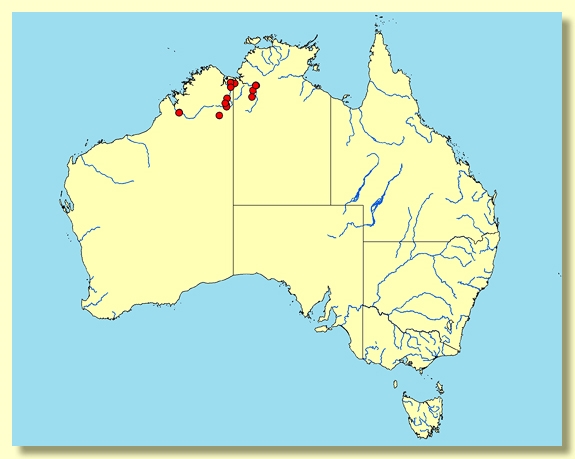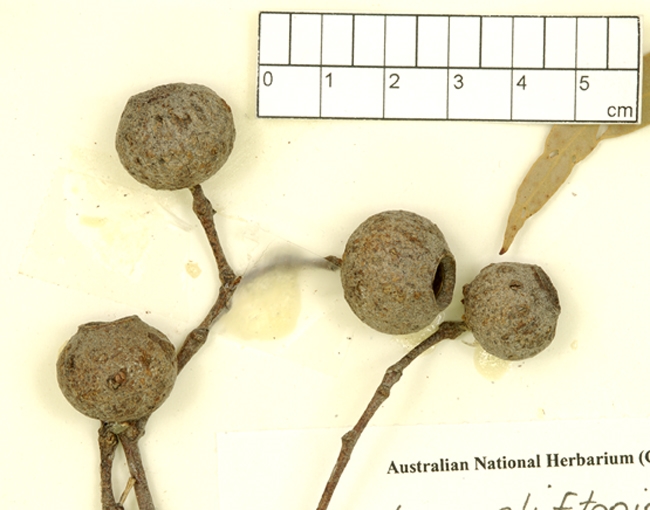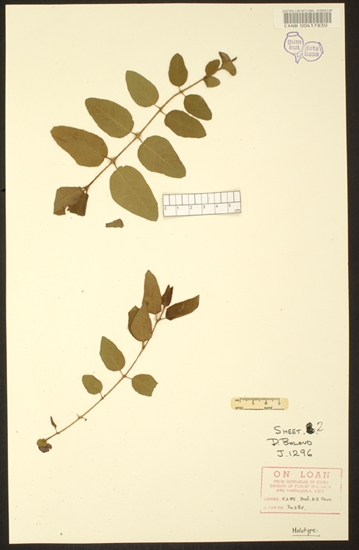Corymbia | Rufaria
Euclid - Online edition
Corymbia cliftoniana
E. pontis D.J.Carr & S.G.M.Carr, Eucalyptus 1: 88 (1985). T: Northern Territory: 1.25 km past Victoria River bridge, on Timber Creek Road, 15º36’S, 131º07’E, 3 June 1972, D.Boland J1296; holo: CANB.
Tree 8 m tall. Forming a lignotuber.
Bark moderately thick, deeply tessellated, brown to grey-brown, rough to the small branches.
Branchlets lack oil glands in the pith; smooth.
Juvenile growth (coppice or field seedlings to 50 cm): stems rounded in cross-section, setose with bristle-glands to ca 0.5 cm long and with a carpet of microscopic white simple hairs beneath; juvenile leaves always shortly petiolate, opposite for ca 25 nodes or sometimes becoming alternate after ca 10 nodes, cordate to ovate, becoming more lanceolate at upper nodes, 4–11.3 cm long, (1.6)2.5–6 cm wide, base lobed to rounded, ± stem-clasping if the petioles are very short, apex rounded and apiculate or broadly pointed, green, with sparse bristle-glands shorter than on the stems and the same white simple hairs densely distributed on both surfaces, the density decreasing up the stem, with upper leaves ± glabrous.
Adult leaves alternate, petioles 1–2.9 cm long; blade narrowly lanceolate, 7.8–15(17) cm long, 1–2.6 cm wide, base tapering to petiole, margin entire, apex pointed, concolorous, dull, green, smooth, side-veins greater than 45° to midrib, reticulation very dense, intramarginal vein apparently absent (contiguous with margin), oil glands apparently absent.
Inflorescence terminal compound, peduncles slender, 0.8–2.5 cm long, buds 7 per umbel, pedicels 0.3–0.8 cm long. Mature buds obovoid to pyriform (ca 0.6 cm long, 0.4 cm wide), smooth, scar absent (both opercula shed together at flowering), operculum shallowly rounded and sometimes apiculate, stamens inflexed, all fertile, anthers oblong, dorsifixed, versatile, dehiscing by longitudinal slits, style long and straight, stigma blunt and with papillae, locules 4, the placentae each with indistinct ovule rows, the cluster small. Flowers creamy white.
Fruit pedicellate (pedicels 0–0.9 cm long), truncate-globose, 1.5–2.4 cm long, 1.5–2.5 cm wide, slightly wider than long with the base flattish, not contracted to a neck or if so then neck very short (< 0.2 cm), surface smooth to slightly rough, disc descending vertically or sometimes obliquely, valves 4, enclosed.
Seeds brown, 8–12 mm long, ellipsoidal with terminal wing, hilum ventral.
Cultivated seedlings (measured at ca node 10): cotyledons large, reniform; stems rounded in cross-section, conspicuously setose with long bristle-glands; leaves always petiolate (petioles to 1.2 cm), opposite for at least 12 nodes, ovate to cordate, 2–9 cm long, 1.4–5 cm wide, base lobed or rarely rounded (never quite peltate), dull, pale-green, ± concolorous or slightly discolorous, sparsely to densely setose, and also with numerous short white simple hairs on both surfaces.
Flowering time unknown.
A bloodwood tree restricted to the area from the Grant Range near Derby in the Kimberley region of Western Australia, east to Purnululu National Park, east of Turkey Creek, Kununurra and in the Weaber Range, extending to the Victoria River region in the Northern Territory. It prefers sandstone plateaus, pavements and escarpment areas. Corymbia cliftoniana has extensive rough brownish tessellated bark relatively thick on the trunk and branches, a dull green crown of smooth petiolate concolorous adult leaves, smooth buds and large truncate-globose fruit that are slightly wider than long (> 1.5 cm wide) and rarely contracting below the orifice to form a neck. This combination of characters separate it from all other bloodwood species in the area. Its juvenile leaves are setose and hairy.
Other bloodwood species occurring within the same general geographic area as C. cliftoniana and having thick rough bark over trunk and branches, and alternate petiolate lanceolate adult leaves are: C. terminalis (incl. C. opaca) (differs by the scurfy buds and urceolate fruit longer than wide), C. polycarpa (differs by discolorous adult leaves, scurfy buds and fruit longer than wide), C. ptychocarpa subsp. ptychocarpa (differs by discolorous adult leaves and large, ribbed, truncate fruit), C. nesophila (differs by discolorous adult leaves and small urceolate fruit < 1.7 cm diameter and distribution in more northern humid areas), C. arenaria (differs by the much smaller urceolate fruit < 1.3 cm diameter).
MORE ABOUT CORYMBIA
MORE ABOUT RED BLOODWOODS
Corymbia cliftoniana: named in honour of Mr. R.C. Clifton (1854–1931). R.C.Clifton was a public servant, being the Chief Clerk in the Survey Office in Perth and, later, Under-Secretary of Lands, Western Australia.

